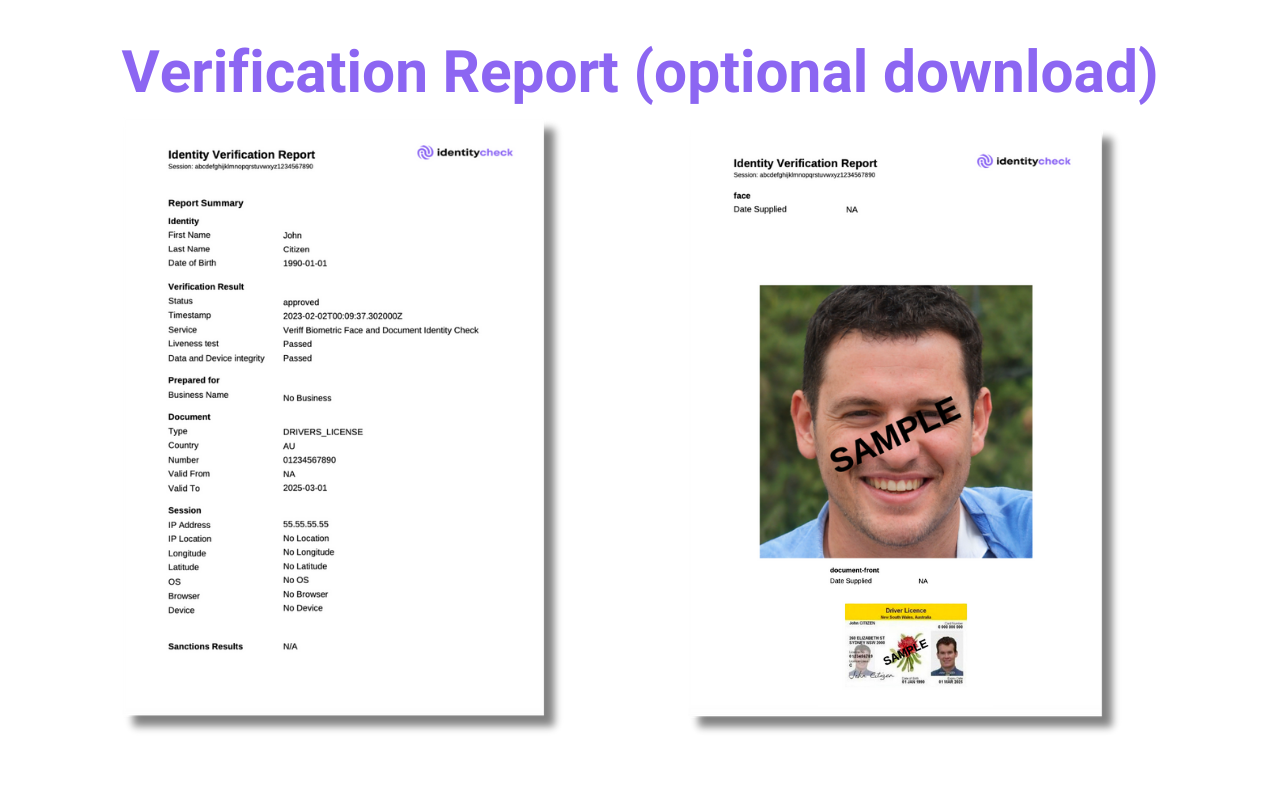KYC Integration Finder

Zapier
IdentityCheck works with Zapier to automate ID verification and connect with the apps you use, streamlining compliance and workflows.
- Developer Tools, Featured, Integration/Automation, Webhooks/Integration, Zapier
-
- Integration status: Active
-
- Integration type: Native
How IdentityCheck works with Zapier
Pre-made Zaps
Here are some pre-made Zaps you can use straight awayStep-by-step guide
These steps will create the appropriate settings you need inside Zapier. If you prefer, you can request a verification directly in IdentityCheck here.- Create an IdentityCheck account.
- Create an API key for IdentityCheck here. Select all scopes.
- Create a new Zap within Zapier.
- Select your trigger (e.g. Google Sheets, your CRM, or wherever contains the email address of the contact you want to verify.
- Map fields to columns. Email address is the only mandatory field.
- Select that you want to request a new IdentityCheck as per your required logic.
Step 1: Open your trigger app (CRM, Sheet, etc.)
You will have chosen this trigger app during the Zap creation process.Step 2: Trigger the IdentityCheck for your chosen Contact
Perform the action you configured to act as the trigger event. E.g. For Sheets you may have selected ‘added a new row’, or for a CRM or Practice Management software you might have selected on creation of a new Contact. This will result in a request to IdentityCheck to send the Contact an ID check email.Step 3: Branded email is sent to the Contact
You can add your company logo and preferred wording in the KYC email customization settings.
Step 4: Contact completes Identity Check
The Contact opens a guided web browser session to take a picture of their Government-issued ID and a selfie.
Step 5: Track results via the dashboard
You can also create automated Reminders for clients here, and internal Notifications here.Step 6: Review detailed results
If you are an IdentityCheck user, you can log in to see the KYC result.
If you have AML screening such as Adverse Media, PEP, and Sanctions, you can review the result on the same page.
Overview of Zapier
Zapier is a web-based automation tool that connects various applications, enabling seamless data exchange and automated task execution without manual intervention. Acting as a bridge between over 3,000 web services, Zapier allows users to create automated workflows, known as Zaps. These Zaps streamline both business and personal processes, reducing manual effort and saving valuable time.Who Zapier Integrates With
Zapier integrates with a vast array of services across different categories, including:- CRM and Sales: Salesforce, HubSpot, Zoho CRM
- Email Marketing: Mailchimp, Constant Contact, ActiveCampaign
- Social Media: Facebook, Twitter, Instagram, LinkedIn
- Productivity: Google Workspace (formerly G Suite), Microsoft Office 365, Slack, Trello
- E-commerce: Shopify, WooCommerce, Etsy
How Zapier Can Work with IdentityCheck
IdentityCheck, a platform designed to streamline the identity verification process, can integrate with Zapier to automate identity verification requests and enhance workflow efficiency. Here’s how it works:- Trigger Setup: Users create a Zap where an event in an integrated app acts as a trigger. Examples include a new client form submission on a website, a new contact added to a CRM, or an order placed on an eCommerce platform.
- Action Configuration: When the trigger event occurs, Zapier automatically sends the relevant information (such as the client’s email address) to IdentityCheck for verification.
- Identity Verification: IdentityCheck processes the request by sending an email to the client, prompting them to verify their identity using a government-issued ID and a selfie. This process is secure and compliant with regulatory requirements.
- Completion and Follow-up: Once verification is complete, IdentityCheck can update the client’s status in the connected app, send a confirmation notification via email or Slack, or trigger additional workflow actions, such as onboarding emails or account activation.
- Automation and Efficiency: This integration significantly reduces manual work, accelerates the onboarding process, ensures compliance, and enhances the customer experience. Additionally, it enables the automation of follow-up actions based on verification outcomes, such as scheduling tasks for account managers or initiating further verification steps if necessary.
Conclusion
By integrating IdentityCheck with Zapier, businesses can automate the identity verification process within their broader workflow automation strategies. This not only saves time and minimizes human error but also ensures a smoother and more secure onboarding process for clients. While specific integration capabilities depend on IdentityCheck’s API features, the potential for improving efficiency and security through automation is substantial.About Zapier
IdentityCheck works with Zapier to automate ID verification and connect with the apps you use, streamlining compliance and workflows.




